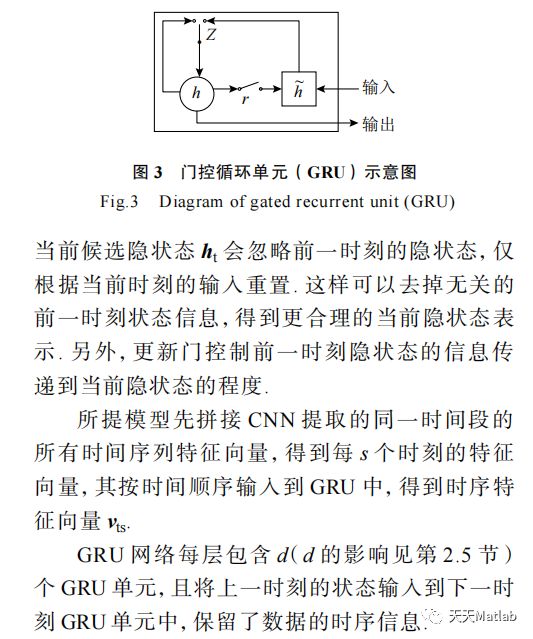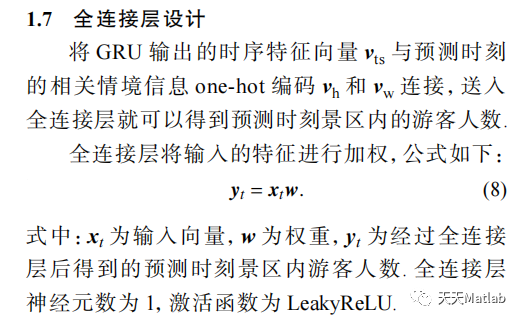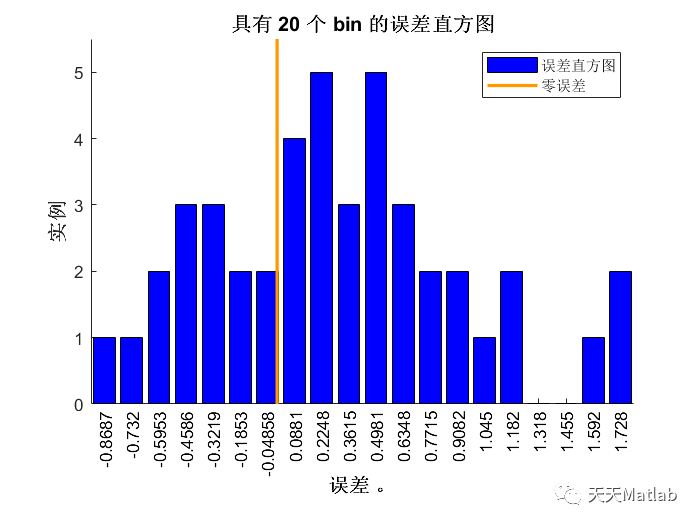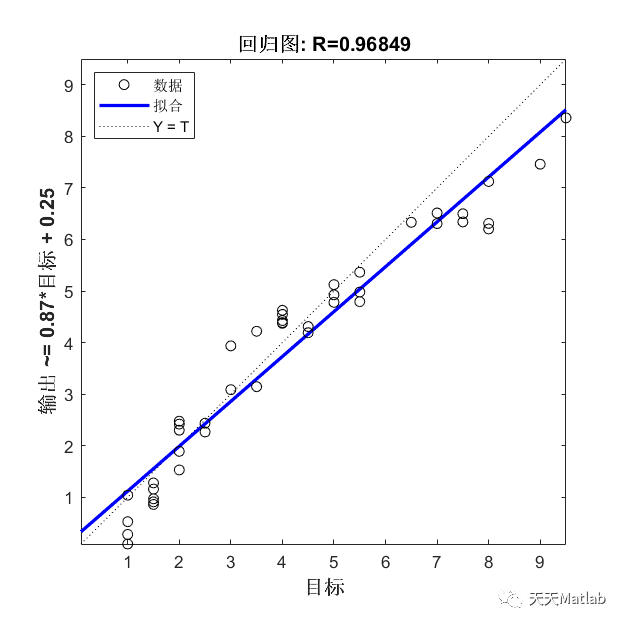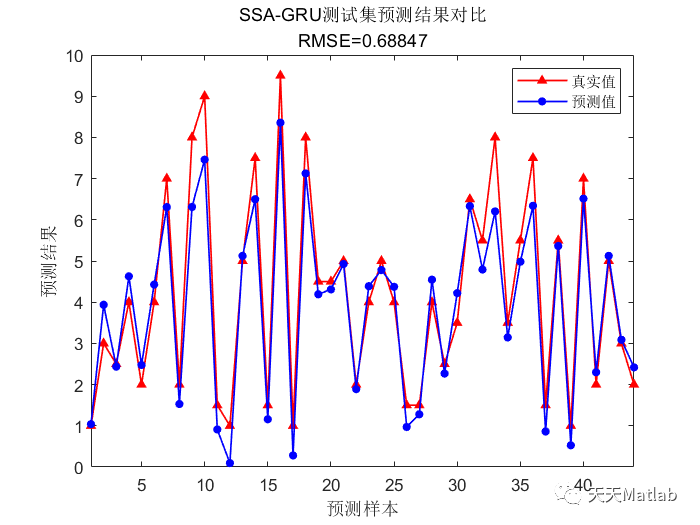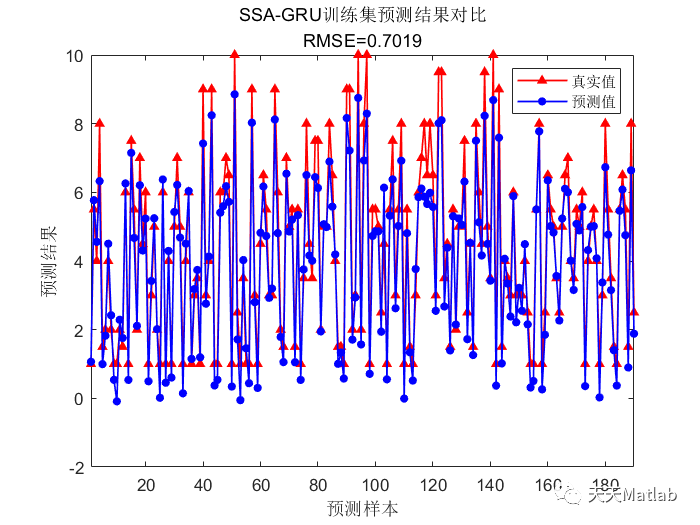✅作者简介:热爱科研的Matlab仿真开发者,修心和技术同步精进,matlab项目合作可私信。
🍎个人主页:Matlab科研工作室
🍊个人信条:格物致知。
更多Matlab仿真内容点击👇
⛄ 内容介绍
软测量建模能够有效地解决生产过程中在线分析仪表测量滞后大、价格昂贵、维护保养复杂等问题。目前,神经网络是软测量建模的主要工具之一。而由于一般的循环神经网络在解决软测量问题时存在长范围依赖和梯度消失的问题,故本文采用门限循环单元神经网络(GRU)建立模型,其门限结构更少,训练效率更高。为进一步提高神经网络的预测精度,本文使用麻雀优化算法(SSA)来优化GRU的初始参数,并以此建立了SSA-GRU软测量模型。最后,将该方法应用于丙烯精馏塔中塔顶丙烷浓度的预测,实验结果表明,在动态建模方面SSA-GRU具有更高的预测精度。
⛄ 部分代码
function [fMin , bestX, Convergence_curve] = SSA(X, N, M, c, d, dim, fobj)
P_percent = 0.2; % 发现者的种群规模占总种群规模的百分比
pNum = round(N*P_percent); % 发现者数量20%
SD = pNum/2; % 警戒者数量10%
ST = 0.8; % 安全阈值
lb = c.*ones(1, dim); % 下限
ub = d.*ones(1,dim); % 上限
% 初始化
for i = 1:N
% X(i, :) = lb + (ub - lb) .* rand(1, dim);
fitness(i) = fobj(X(i, :));
end
pFit = fitness;
pX = X; % 与pFit相对应的个体最佳位置
[fMin, bestI] = min(fitness); % fMin表示全局最优解
bestX = X(bestI, :); % bestX表示全局最优位置
%% 迭代寻优
for t = 1 : M
[~, sortIndex] = sort(pFit); % 排序
[fmax, B] = max(pFit);
worst = X(B, :);
%% 发现者位置更新
r2 = rand(1);
if r2 < ST
for i = 1:pNum % Equation (3)
r1 = rand(1);
X(sortIndex(i), :) = pX(sortIndex(i), :)*exp(-(i)/(r1*M));
X(sortIndex(i), :) = Bounds(X(sortIndex(i), :), lb, ub);
fitness(sortIndex(i)) = fobj(X(sortIndex(i), :));
end
else
for i = 1:pNum
X(sortIndex(i), :) = pX(sortIndex(i), :)+randn(1)*ones(1, dim);
X(sortIndex(i), :) = Bounds(X(sortIndex(i), :), lb, ub);
fitness(sortIndex(i)) = fobj(X(sortIndex(i), :));
end
end
[~, bestII] = min(fitness);
bestXX = X(bestII, :);
%% 跟随者位置更新
for i = (pNum+1):N % Equation (4)
A = floor(rand(1, dim)*2)*2-1;
if i > N/2
X(sortIndex(i), :) = randn(1)*exp((worst-pX(sortIndex(i), :))/(i)^2);
else
X(sortIndex(i), :) = bestXX+(abs((pX(sortIndex(i), :)-bestXX)))*(A'*(A*A')^(-1))*ones(1, dim);
end
X(sortIndex(i), :) = Bounds(X(sortIndex(i), :), lb, ub);
fitness(sortIndex(i)) = fobj(X(sortIndex(i), :));
end
%% 警戒者位置更新
c = randperm(numel(sortIndex));
b = sortIndex(c(1:SD));
for j = 1:length(b) % Equation (5)
if pFit(sortIndex(b(j))) > fMin
X(sortIndex(b(j)), :) = bestX+(randn(1, dim)).*(abs((pX(sortIndex(b(j)), :) -bestX)));
else
X(sortIndex(b(j)), :) = pX(sortIndex(b(j)), :)+(2*rand(1)-1)*(abs(pX(sortIndex(b(j)), :)-worst))/(pFit(sortIndex(b(j)))-fmax+1e-50);
end
X(sortIndex(b(j)), :) = Bounds(X(sortIndex(b(j)), :), lb, ub);
fitness(sortIndex(b(j))) = fobj(X(sortIndex(b(j)), :));
end
for i = 1:N
% 更新个体最优
if fitness(i) < pFit(i)
pFit(i) = fitness(i);
pX(i, :) = X(i, :);
end
% 更新全局最优
if pFit(i) < fMin
fMin = pFit(i);
bestX = pX(i, :);
end
end
Convergence_curve(t) = fMin;
disp(['SSA: At iteration ', num2str(t), ' ,the best fitness is ', num2str(fMin)]);
end
%% 边界处理
function s = Bounds(s, Lb, Ub)
% 下界
temp = s;
I = temp < Lb;
temp(I) = Lb(I);
% 上界
J = temp > Ub;
temp(J) = Ub(J);
% 更新
s = temp;
⛄ 运行结果
⛄ 参考文献
[1]殷礼胜, 刘攀, 孙双晨,等. 基于互补集合经验模态分解和改进麻雀搜索算法优化双向门控循环单元的交通流组合预测模型[J]. 电子与信息学报, 2022, 45:1-10.
⛄ Matlab代码关注
❤️部分理论引用网络文献,若有侵权联系博主删除
❤️ 关注我领取海量matlab电子书和数学建模资料

